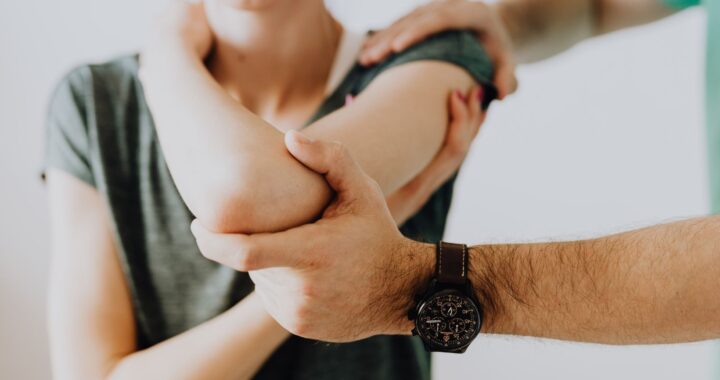
Unraveling the Mystery: Intention Tremors and Their Causes
Tremors are a common neurological condition, often misunderstood and misdiagnosed. Among the various types, intention tremors are particularly intriguing due to their specific triggers and distinct characteristics. This post delves into the nature of intention tremors, their causes, and how they differ from other tremors such as essential tremors.
Understanding Intention Tremors
Intention tremors, also known as intentional tremors, are characterized by involuntary, rhythmic muscle contractions that occur during purposeful movements. Unlike resting tremors, which occur when muscles are at rest, intention tremors become noticeable when an individual attempts to perform a specific task, such as reaching for an object or writing. These tremors typically worsen as the individual gets closer to their target, making precise movements challenging.
Essential Tremor vs Intention Tremor
One of the most common points of confusion is the difference between essential tremor and intention tremor. Essential tremor is a neurological disorder that causes rhythmic shaking, primarily affecting the hands, but it can also involve the head, voice, and legs. It often occurs during voluntary movements and can be exacerbated by stress, fatigue, or caffeine.
In contrast, intention tremors are specifically associated with cerebellar dysfunction. The cerebellum, located at the back of the brain, plays a crucial role in coordinating voluntary movements. Damage to this area, whether due to stroke, multiple sclerosis, or other neurological conditions, can lead to intention tremors. Therefore, understanding the distinction between essential tremor vs intention tremor is vital for accurate diagnosis and treatment.
Intentional Tremor Causes
The underlying causes of intentional tremors are diverse and complex. These tremors are primarily linked to issues within the cerebellum or its connections with other parts of the brain. Here are some common intentional tremor causes:
Cerebellar Ataxia
Cerebellar ataxia is a condition characterized by a lack of muscle control and coordination due to cerebellar dysfunction. This can result from various factors, including genetic mutations, chronic alcohol abuse, or autoimmune diseases. Intention tremors are a hallmark symptom of cerebellar ataxia, highlighting the crucial role of the cerebellum in motor control.
Multiple Sclerosis (MS)
Multiple sclerosis is an autoimmune disease that affects the central nervous system, leading to the deterioration of the myelin sheath that protects nerve fibers. This damage disrupts communication between the brain and the rest of the body, often resulting in intention tremors among other symptoms. In MS patients, these tremors can significantly impact daily activities and quality of life.
Stroke
A stroke occurs when the blood supply to part of the brain is interrupted or reduced, depriving brain tissue of oxygen and nutrients. If the cerebellum or its pathways are affected, intention tremors can develop.

Rehabilitation and targeted therapies are essential in managing post-stroke intention tremors and improving motor function.
Traumatic Brain Injury (TBI)
Traumatic brain injuries can cause significant damage to the brain, including the cerebellum. Depending on the severity and location of the injury, individuals may experience intention tremors. Early intervention and rehabilitation are crucial in mitigating the long-term effects of TBIs and managing tremor symptoms.
Diagnosing and Managing Intention Tremors
Accurate diagnosis of intention tremors involves a comprehensive neurological examination, medical history review, and imaging studies such as MRI or CT scans. Identifying the underlying cause is essential for developing an effective treatment plan.
Treatment Options
Treatment for intention tremors focuses on managing symptoms and addressing the root cause. Medications such as beta-blockers, anticonvulsants, or benzodiazepines may be prescribed to reduce tremor severity. In some cases, physical therapy and occupational therapy can help improve motor skills and enhance daily functioning.
Assistive Devices
For individuals with significant tremor-related impairments, assistive devices like the Steadi-One can be invaluable. This innovative wearable device helps stabilize hand tremors through a combination of counterweights and damping mechanisms, allowing individuals to perform daily tasks with greater ease and precision.
Lifestyle Modifications
Making lifestyle changes can also play a crucial role in managing intention tremors. Reducing caffeine intake, managing stress, and ensuring adequate sleep are simple yet effective strategies.

Engaging in relaxation techniques such as yoga or meditation can further help in controlling tremor symptoms.
Conclusion
Intention tremors, while challenging, can be effectively managed with the right approach. Understanding the differences between essential tremor vs intention tremor is crucial for accurate diagnosis and treatment. Identifying the intentional tremor causes allows for targeted interventions, improving the quality of life for those affected. With advancements in medical technology and assistive devices like those offered by Steadiwear, individuals with intentional tremors can regain control and independence in their daily lives.





